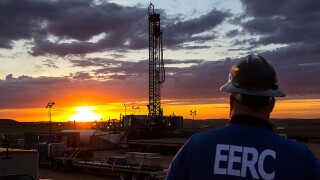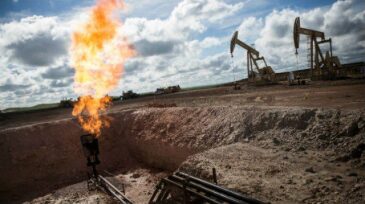Emission management
The company engineered, designed, and manufactured multiple internal floating roof systems and tank-top equipment packages for TotalEnergies’ new storage terminal in Equatorial Guinea.
Growing energy transition investment highlights oil and gas technologies as key enablers.
EERC CEO Charles Gorecki outlines how applied research in North Dakota is helping improve oil recovery, reduce emissions, and advance carbon storage.
-
On 16 June 2017, the Alberta Oil Sands Advisory Group released its report Recommendations on Implementation of the Oil Sands Emissions Limit Established by the Alberta Climate Leadership Plan.
-
The Trump administration asked a federal appeals court on 7 July to allow it to delay enforcement of an Obama administration rule to limit methane pollution from oil and natural gas drilling.
-
A federal appeals court in Washington ruled on 3 July that the head of the Environmental Protection Agency (EPA) overstepped his authority in trying to delay implementation of an Obama administration rule requiring oil and gas companies to monitor and reduce methane leaks.
-
The Interior Department is preparing to delay implementation of a rule limiting methane waste at oil and natural gas drilling sites.
-
The US Environmental Protection Agency (EPA) is taking steps to ensure portions of the agency’s 2016 New Source Performance Standards for the oil and natural gas industry do not take effect while the agency works through the reconsideration process.
-
The Environmental Protection Agency (EPA) has halted an Obama administration rule to cut down on pollution of methane, a greenhouse gas produced at oil and natural gas drilling wells.
-
A federal court on 18 May formally paused a lawsuit over an Obama administration methane regulation.
-
Optical gas-imaging is effective for visual identification of volatile organic compound (VOC) leaks. But it doesn't currently quantify the leak rate as required by regulations. This paper discusses work aimed at adding that quantification.
-
The amount of natural gas flared has plunged in North Dakota, a region that has been the leader by far in gas wasted because gathering systems could not hook up the wells fast enough.
-
Emissions are in the air and in the headlines every day. With growing regulations around all types of air emissions, are there ways that industry can deploy technologies cost-effectively in the current environment?











